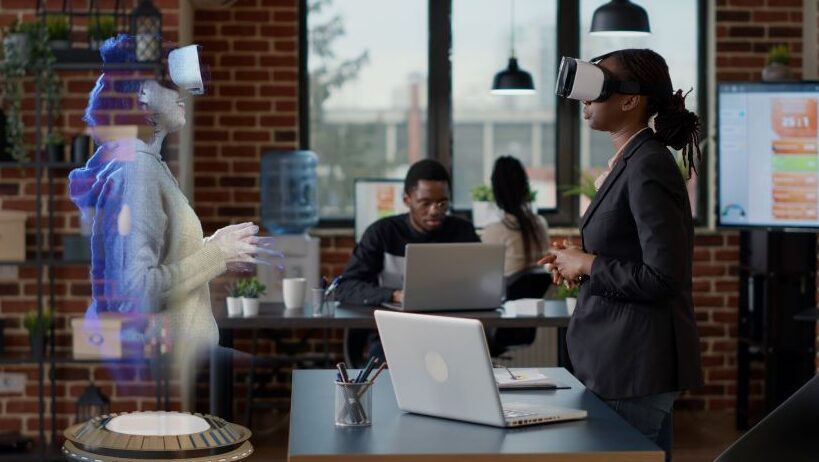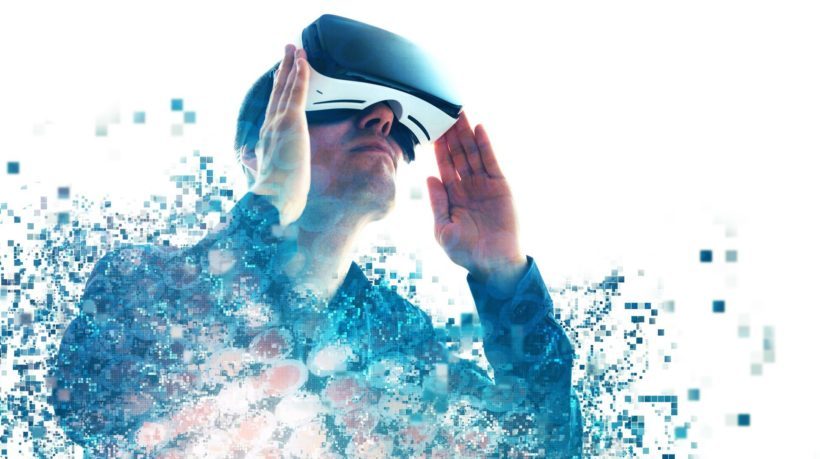What To Consider Prior To Implementing Virtual Reality Training
Virtual Reality has been included in various ‘predicting the year’s top trends in eLearning’ articles in 2016, 2017, 2018, and 2019, and will likely feature on these lists for many years to come. Despite questions about the adoption of VR more broadly [1], its use in the space of Learning and Development has been more promising, with several high-profile companies, including Walmart [2] and Fidelity [3], reporting positive business outcomes as a result of their shift to Virtual Reality training. ABI research predicts that the enterprise VR training market will grow to US$6.3 billion by 2022 [4], up from US$216 million in 2018. Although it appears as if the hype surrounding VR is finally materializing into concrete adoption, VR may not be right for every organization or every performance problem. Indeed, valuable improvements in performance can be the result of very simple interventions, such as checklists. As such, it is critical that L&D stakeholders carefully consider the appropriateness of VR before undertaking the resource-intensive process of developing, implementing, and tracking VR training programs. In this article, I will present a few things that you should consider before deciding to implement a Virtual Reality training program. This list is by no means exhaustive, as each organization will have its own unique challenges, but these factors will be universal across all organizational contexts.
The Performance Goals You Are Trying To Achieve
For a VR training program to be a justifiable initiative, it must deliver an improvement in performance that exceeds what is possible to accomplish using less high-tech training methods (e.g., Instructor-Led Training, eLearning on a computer, paper-based or PDF job aids, etc.), taking into account the costs associated with both methods. Essentially, one needs to calculate the relative Return On Investment associated with VR training, which will change depending on the performance goals that you are trying to achieve.
Developing the ability to perform effectively in complex situations is particularly well suited for VR training. This is especially the case if the situation is rare or otherwise couldn’t be replicated in the real world, either because of logistical challenges or safety issues. For example, the U.S. Army has leveraged Virtual Reality to help train soldiers in realistic battlefield environments that replicate what they might experience in real life [5]. In this case, it is neither feasible nor safe to train soldiers on the actual battlefield, and other training methods would not be able to reconstruct a realistic setting as well as VR. Virtual Reality has also been used to help medical students develop their clinical skills with rare or otherwise vulnerable populations. Although trained actors are often used as ‘standardized patients’ to help students practice their clinical skills, actors cannot be used to portray children or certain types of patients (e.g., intellectually disabled persons) so it can be challenging for students to practice interacting with these patients. Finally, Farmers Insurance has started using VR to train their claims adjusters [6]. As stated by Keith Daily, Chief Claims Officer, “in the past, we would build highly realistic sets at our main campus to teach adjusters how to estimate the costs of different types of damage. But, of course, we could never cover every possible situation”. For Farmers, VR can better represent all of the complex situations that claims adjusters might find themselves facing.
Increasing employees’ empathy for the client or customer is also well suited for VR training. Communicating with empathy is a critical skill for any employee who interacts with a client or customer, and can have meaningful effects on customer satisfaction and retention. Researchers have found that viewing the world through the eyes of someone else (called ‘perspective-taking’) is a great way of increasing empathy. For example, Ahn, Le, and Bailenson (2013) conducted a study where they immersed participants in a Virtual Reality experience that allowed them to see what it was like to be colorblind. Compared to participants who simply imagined what it was like to be colorblind, participants in the ‘embodied experience’ group spent significantly longer helping a person with colorblindness after the experiment, suggesting that Virtual Reality can improve individuals’ empathy towards others. Fidelity decided to leverage this aspect of Virtual Reality by bringing their call center employees into the homes of their customers so they could gain a better understanding of their customers’ perspectives and how their actions as a call center employee may affect their life.
The Setting(s) In Which Training Will Be Implemented
However, other organizations are using VR to train employees to perform in more routine situations, which are neither rare nor dangerous. For example, both Hilton and Walmart have used Virtual Reality to train their front-line staff in customer-interaction skills. Improving customer-staff interactions is a performance goal that could be achieved through in-person training, so why did Hilton and Walmart decide to implement this more technically-rigorous strategy? Well, these are two massive companies who need to train thousands of workers per year. Hilton has 5,300 properties and hired 20,000 new hotel employees last year. Walmart has over 6,300 stores and employs over a million associates. For these organizations, deploying in-person training represents a significant cost and introduces the risk of employees getting different training experiences based on their location. Virtual Reality introduces a way to deliver interactive training at scale while reducing costs and ensuring a standardized training experience. However, the relative efficiency of VR training decreases as the number of settings in which training will be implemented gets smaller and smaller. When thinking about whether to implement VR training, especially when using it to develop skills that could be learned through other means, it’s important to ignore the buzz and consider whether it truly represents a more cost-effective way to train employees.
The Learning Culture Of Your Organization
Having an organizational culture defined by learning and innovation is critical for training initiatives to be successful, particularly when they include the integration of new technology like Virtual Reality. The Technology Acceptance Model (TAM) is one theoretical model that might be particularly useful when thinking about the organizational ingredients needed to successfully implement a technology like VR in a training capacity. According to the TAM, individuals’ intentions to use VR-based training is a function of several factors, including but not limited to: job relevance (i.e., an individual’s perception regarding the degree to which the VR training is applicable to their job), output quality (i.e., whether an individual thinks the VR training will improve their performance), perceived innovativeness (i.e., an individual’s perception of their willingness to try and create new things), and perceived ease of use of the VR training. Making sure that the proposed VR training will be directly related to an employee’s role, will be effective in improving performance, and will be easy to use is critical before undertaking a VR training initiative, or else you risk an expensive implementation that doesn’t lead to the desired outcomes. Furthermore, taking more general steps to foster a culture of innovativeness will help this and other learning initiatives.
These are just 3 considerations that need to be made before implementing a VR training initiative; there are many more considerations that should be made based on your specific setting.
References:
[1] The Verge 2018 tech report card: AR and VR
[2] Walmart deploys 17,000 Oculus Go headsets to train its employees
[3] Exploring virtual reality for empathy training
[4 ] Enterprise Virtual Reality Training Services to Generate US$6.3 billion in 2022
[5] The U.S. Army Is Using Virtual Reality Combat to Train Soldiers
[6] We Used Virtual Reality as a Training Tool. Here's What We Learned.









